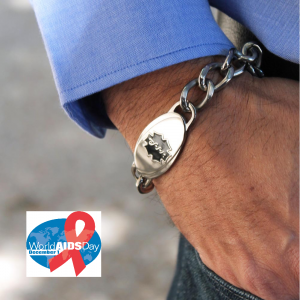World AIDS Day is observed annually on December 1 to raise awareness of AIDS and HIV and show support for people living with this medical condition. According to the US Department of Health and Human Services, the celebration also highlights the success of worldwide efforts to combat HIV and AIDS.
HIV and AIDS continue to be a significant global health issue in 2017 with an estimated 36.7 million people living with this condition. Over 1 million people die of AIDS each year.
HIV and AIDS: What’s the Difference?
HIV is the virus that causes HIV infection. It damages the immune system by killing CD4 cells that are an important part of the immune system. Loss of these cells make it hard for the body to fight off infections.
AIDS is the latest stage of HIV infection where the amount of HIV in the body has significantly increased while CD4 cells decreases.
The National Institutes of Health highlights that HIV medicines can stop HIV infection from progressing to AIDS. Without HIV medication, the infection can advance to AIDS in 10-12 years.
Medical IDs for Persons Living with HIV or AIDS
Medical alert jewelry is recommended for people living with one or more medical conditions. This includes HIV and AIDS. In an emergency, a medical ID bracelet or necklace can alert responders of important medical information that is critical to administer safe and accurate treatment that a patient requires.
Drug to drug interactions are common concerns of patients with HIV and their health care providers. A custom engraved medical ID can contain information on medications to prevent unwanted drug interactions. While HIV medicines help people live longer and healthier lives, they can also cause side effects. Any swelling of the face, eyes, lips, throat, or tongue is considered a life-threatening side effect that requires immediate medical attention.
Like any chronic medical condition, living with HIV or AIDS has its health risks that are also important to know of in an emergency.
Read: What to Engrave on Your Medical Alert Jewelry
Raising Awareness and Reducing Stigma around HIV and AIDS
According to Avert.org, many of the people most vulnerable to HIV face stigma, prejudice, and discrimination in their daily lives.
Photo credit: The Stigma Project
One way to end this stigma is by raising awareness through education and having more conversations about AIDS and HIV.
Quick HIV Facts
- HIV and AIDS are not spread by hugging, sharing food, shaking hands, or using the same toilet seat.
- HIV and AIDS are spread only through intercourse, blood, or pregnancy.
- HIV-positive people now live longer and healthier lives.
- HIV medicines prevent HIV from advancing to AIDS and reduce the risk of HIV transmission.
- The only way to know for sure that a person has HIV is for them to get tested.
To learn more about HIV & AIDS and how to help raise awareness, visit HIV.gov for more information and free resource. Show your support by sharing this post or by leaving a comment below.






